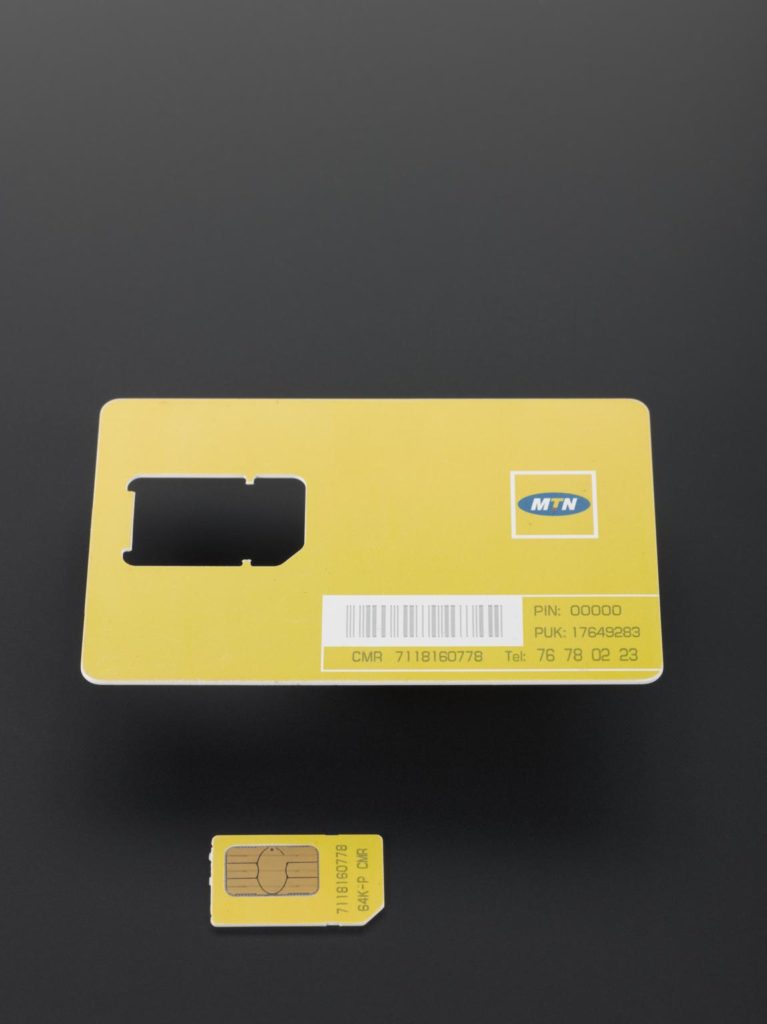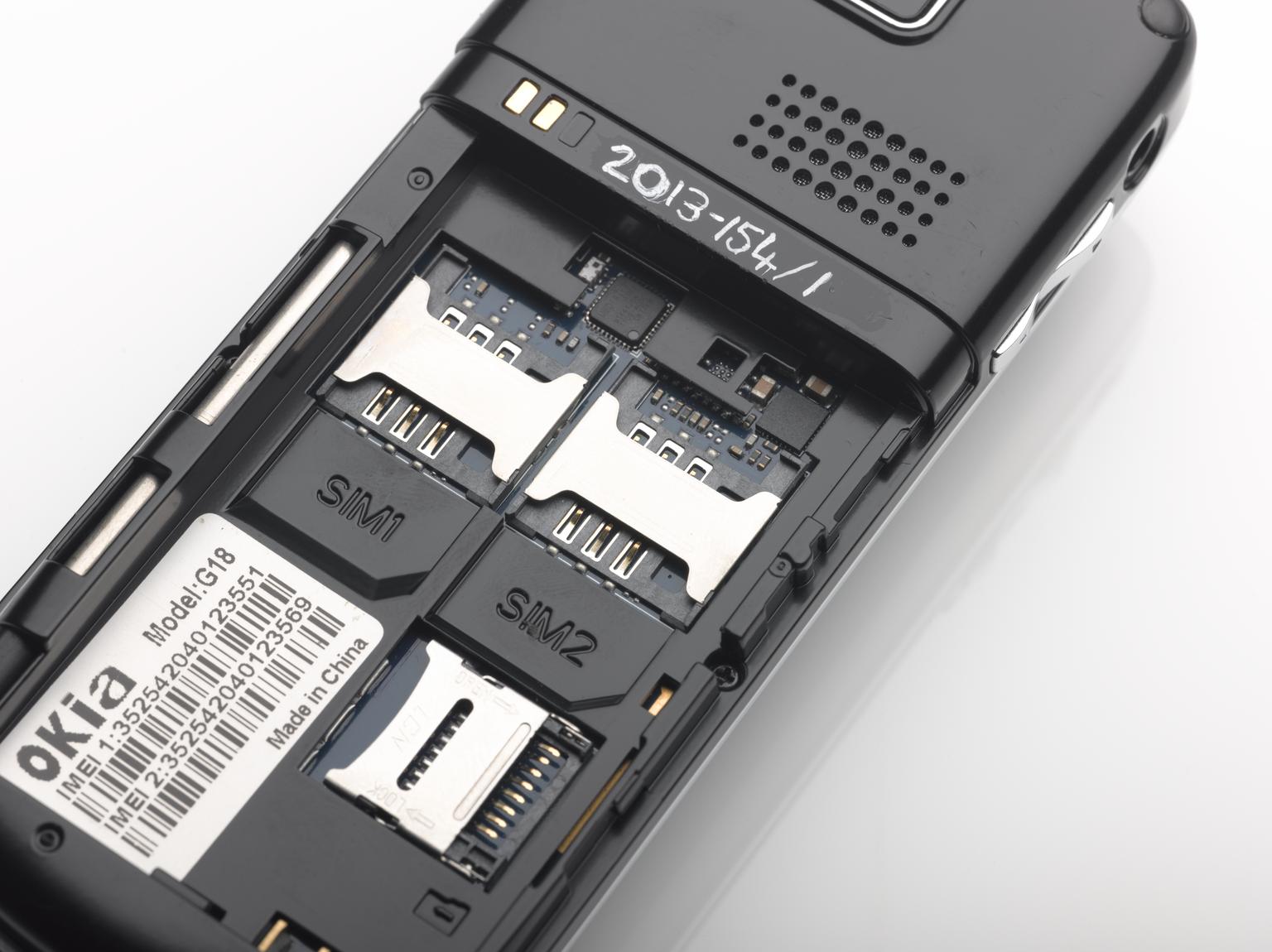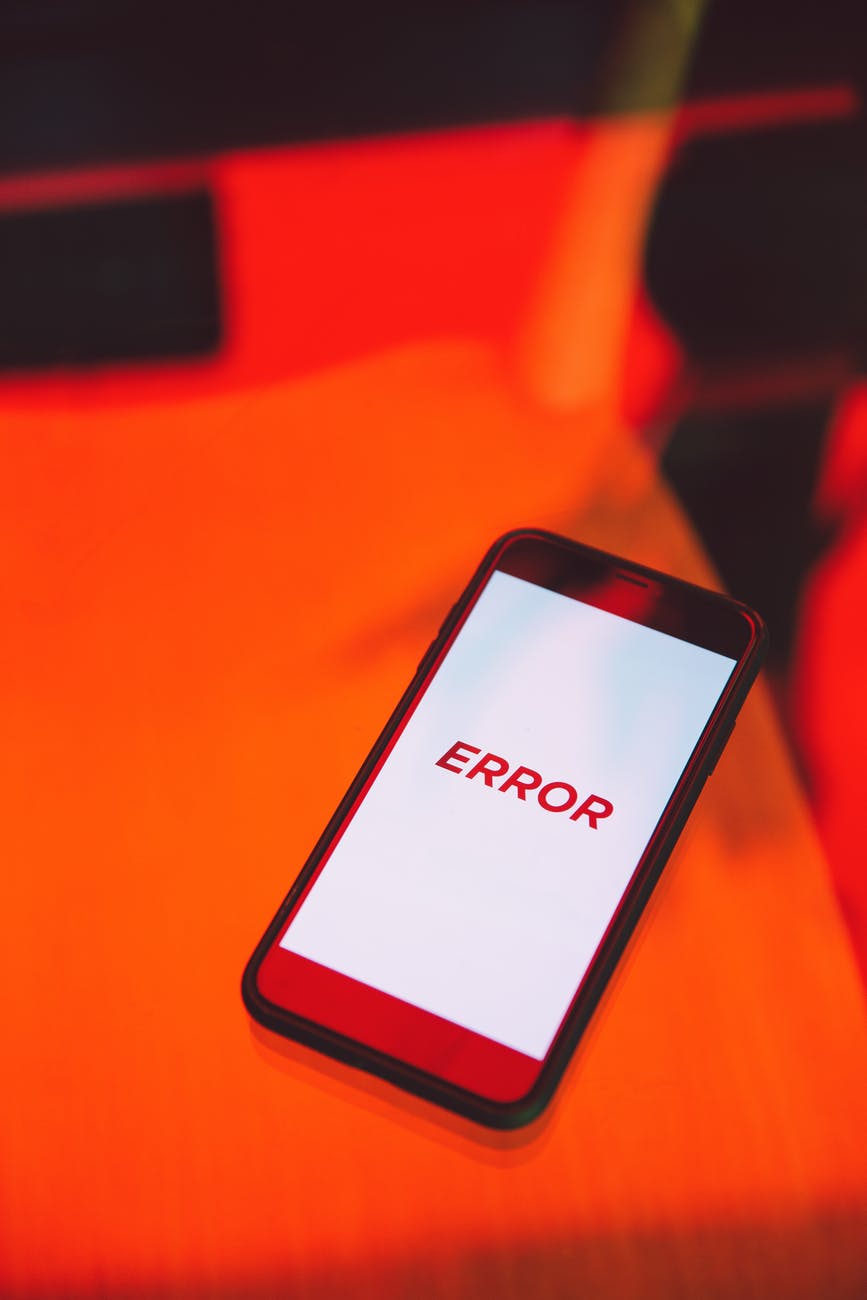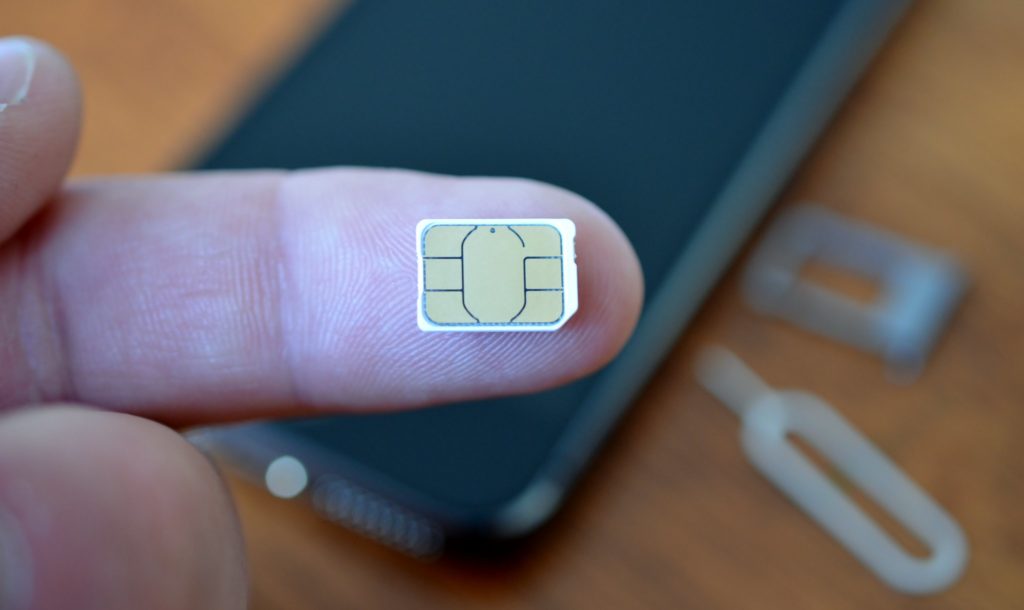
Is your SIM card giving you some trouble? It may be time to update it. How often should a SIM card be replaced? How do you really know though, when you should update a SIM card? There are actually very specific instances when this actually happens. With the introduction of eSIM cards the need to do this may disappear into the ether. Knowing wireless service providers, and software developers there’s going to be an issue at some point that forces you to update your eSIM. In any case, we’ll get to the speculation about future technology later on in the article. Are there moments when you should consider replacing your SIM card? Actually, yes there are pretty clear moments when this is the case. Your phone can show a SIM card error at any moment.
Now, it’s important to understand that not every time that you see the SIM card error warning on your phone it should mean that you should start thinking about replacing your SIM card. It sounds weird when you say it, but some of the SIM card error warnings that show up are not necessarily caused by SIM card issues. In some cases, it’s actually the phone’s software that’s taking too long to load that’s the problem. Now, if the loading issue is exclusive to the SIM card, and it’s bothersome then changing out the SIM card can be an option. Here are a couple of things to consider to answer the question of how often should a SIM card be replaced.
- Is There A Point When The SIM Card Needs To Be Replaced?
- How Often Should A Sim Card Be Replaced? – Is There An Actual Time Frame?
- My SIM Card Is On The Border Line
- How To Get A New SIM Card From Your Service Provider
- How Things Are Potentially Going To Change With eSIMs
- When Will The End of Regular SIM Cards Come?
Is There A Point When The SIM Card Needs To Be Replaced?

We could say that there are two main reasons why you should replace your SIM card. Both of these are forceful reasons to replace your SIM card. You won’t have much of a choice. One instance has to do with getting that recurring SIM card error message. Here’s the thing though, at times this can be an issue with the placement of the SIM card. It may be a bit loose in the SIM card port. This issue could be a problem with the phone. You want to rule that out before you switch the SIM card. If you think that the SIM card is taking too long to load, particularly when you turn your phone back on that can be a problem. Also, if you haven’t gotten texts in a while, and you check, and see that you have a SIM card error message.
The other instance where you’re not going to have much of a choice, but to replace the SIM card is when you update your phone, and the new device that you get doesn’t read the card that you have. There are ways to get around this issue. A lot of people what they used to do is literally cut the card to make sure that it fit the new SIM Card port for the phone. There are actually devices that will allow you to adapt your SIM card to the phone. So what you’d have to do is cut the card and make it as small as it can be. From there, you can add these adaptors, and use it on the new phone. If you’re all that tech savvy just change the card!
How Often Should A Sim Card Be Replaced? – Is There An Actual Time Frame?
We know that if you came here trying to find out how often should a SIM card be replaced you’re probably looking for a time frame. That can be hard to put out there. Particularly if the card still works fine. There are a couple of things that you’re going to want to keep in mind. Particularly, if you take the SIM card out on a regular basis. Also, if you keep your phone in very hot areas. That’s another issue that you’re going to come across. There’s a chance that some of the plastic kind of melts into the phone. That can be a real problem, and it’s actually more common, or at least was more common with older phones than people think.
If you are someone who knows that the they put the SIM card under a lot of stress if you will, two years is probably a good time frame. It’s a weird concept though. If you want to avoid data loss on the SIM card then it may be a good idea to update it around that 2 year time frame. Then again, you’d have to go to your service provider and make sure that they are able to transfer your data to a new SIM. The best idea in this situation may be to not keep data on your SIM card at all! Use a cloud service, or even an SD card that you can later insert into a PC to download your files. If you want to be really safe 2 years may be a good number to keep in mind.
My SIM Card Is On The Border Line

You’ll essentially recognize this over time. The SIM error message isn’t just something that pops up sporadically it seems like it’s an issue that you have to deal with on a daily basis. A lot of times though, people who find themselves in these situations try and blame other things, and not necessarily the SIM card itself. This is mainly because most people really don’t think about their SIM cards in a way that they would be your scapegoat when something is wrong with your phone. When you’re literally reading a message that says SIM card error on a consistent basis, or you find yourself without network coverage in the middle of urban areas you would do well to take the hint.
When you feel that your SIM card is on that border line where these SIM card errors are starting to become a more common occurrence that’s when you want to make the switch. Really it’s a safety issue. When you’re having these types of problems there’s a chance that your phone could be off line for an extended period of time. Ironically, those moments when your phone is off line tend to happen in the worst possible time. The last thing that you want is to get a flat tire, and not have anyone that you can call to have them come help. Of course, we went a bit light in our worst case scenario, but you get the picture. Make the change before you find yourself off line in a compromising situation.
How To Get A New SIM Card From Your Service Provider

For years this was not a complex process at all. For the most part, it still shouldn’t be too hard. Particularly because most people are going to stick with their SIM cards until they die out. Instead of asking themselves how often should a SIM card be replaced. Having said this, there was a recent microchip shortage across the globe. This made all sorts of memory cards, and different elements needed to make a wide variety of gadgets become harder to obtain. Mobile service providers though, have been stacking up on SIM cards for years. Therefore, if you just head to the store that your service provider has near your home you’re going to be able to request a new SIM card.
The process though, can certainly differ depending on who your service provider is. Indian service provider Airtel, for example, allows users to request a new SIM card through their website. The card is then going to be sent to the address of the person who requested the card, and that’s that. You don’t have to head to your local store to make the switch. This type of method worked wonders when the world was on lockdown. These days though, you don’t necessarily need to stay away from people. If you don’t feel comfortable having to make the SIM switch on your own, or you want to make sure that some of the data that you have on the existing SIM card is preserved your best bet is going to be to head down to your local store.
How Things Are Potentially Going To Change With eSIMs
Any thing that is currently said about the future of eSIM cards falls into the realm of speculation. We of course, can’t presume to know exactly what the next steps will be within this digital world. Judging though, from what we currently know about eSIM cards, as well as phone manufacturers, and wireless service providers you’re going to be forced into updating your eSIM every once in a while. As time goes on the types of phones that are going to be compatible with the next generation of eSIMs is going to diminish. What does this mean? This means that you’re going to be forced to buy new devices every so often. To be able to make sure that the device that you have runs up to speed with the technology of the time.
Simply put, the main difference that we’re going to see with eSIMs compared to what we see know with regular SIM cards is that you won’t have to insert the card manually anymore. In fact, there is an argument to be made that eSIM cards are going to make it harder on folks to use updated software on their phones. Even though regular SIM cards have changed of the years most of the older cards still had a way to be adapted to new technology. It’s looking like this backward compatibility feature isn’t something that phone manufacturers are going to be willing to fix or promote. Updating your eSIM is going to be a must to be able to get the phone to operate. You can be left behind really quickly.
When Will The End of Regular SIM Cards Come?

This is a topic that we’ve explored on other articles on the site. Not much has changed since we last covered the issue. That’s actually the key to the whole thing. We have countries across the globe that are quickly adopting even 6G networks. If they’re not adopting these networks right now they are at the very least in the works. While other countries can’t manage to even build a reliable 3G network. Does this mean that SIM cards will forcefully need to continue to be manufactured to meet the demands of undeveloped countries? That seems to be one of the options that is on the table.
The other thing that can happen is that phone manufacturers will start working together with wireless service providers to bring eSIM use even if it’s to grant access to a lower generation network. That may be an avenue that’s worth exploring. Otherwise phone manufacturers could find themselves in the need to continue creating devices from two different eras at once. Of course, that’s not necessarily an impossible task. We are not sure though, if they’ve looked into what that would mean for them as a company. The worst case scenario would see undeveloped countries being left in the dark ages. The tech gap is widening though, and this is one of the talking points that we feel goes underdiscussed. Yet, it could turn out to be a major issue. The end of SIM cards doesn’t seem near, but we never know.
How Often Should A Sim Card Be Replaced? – Conclusion
We could sum up the article by just saying don’t ignore the signs. We know that most people do, because we’ve also been most people. You try and blame it on the phone, which by the way may also be culprit. The best advice may be to switch out your SIM card about every two years. In fact, if you’re able to switch devices, and SIM card every two years you’re likely to be better equipped to take advantage of the new features of the digital world. Around the 2 year mark your phone is going to start having updating issues, and not allowing you to get in on the latest features that other options are offering. This can slow the whole system down as well. If you have an even older SIM Card things could get worse. Two years is probably a good time frame for change.
Get An E-SIM Card To Access Low Cost Coverage In Any Country In The World

In doing so you’ll be supporting us create more content to help you find coverage as you travel. At the same time you may be solving the issue that you came here for help on!